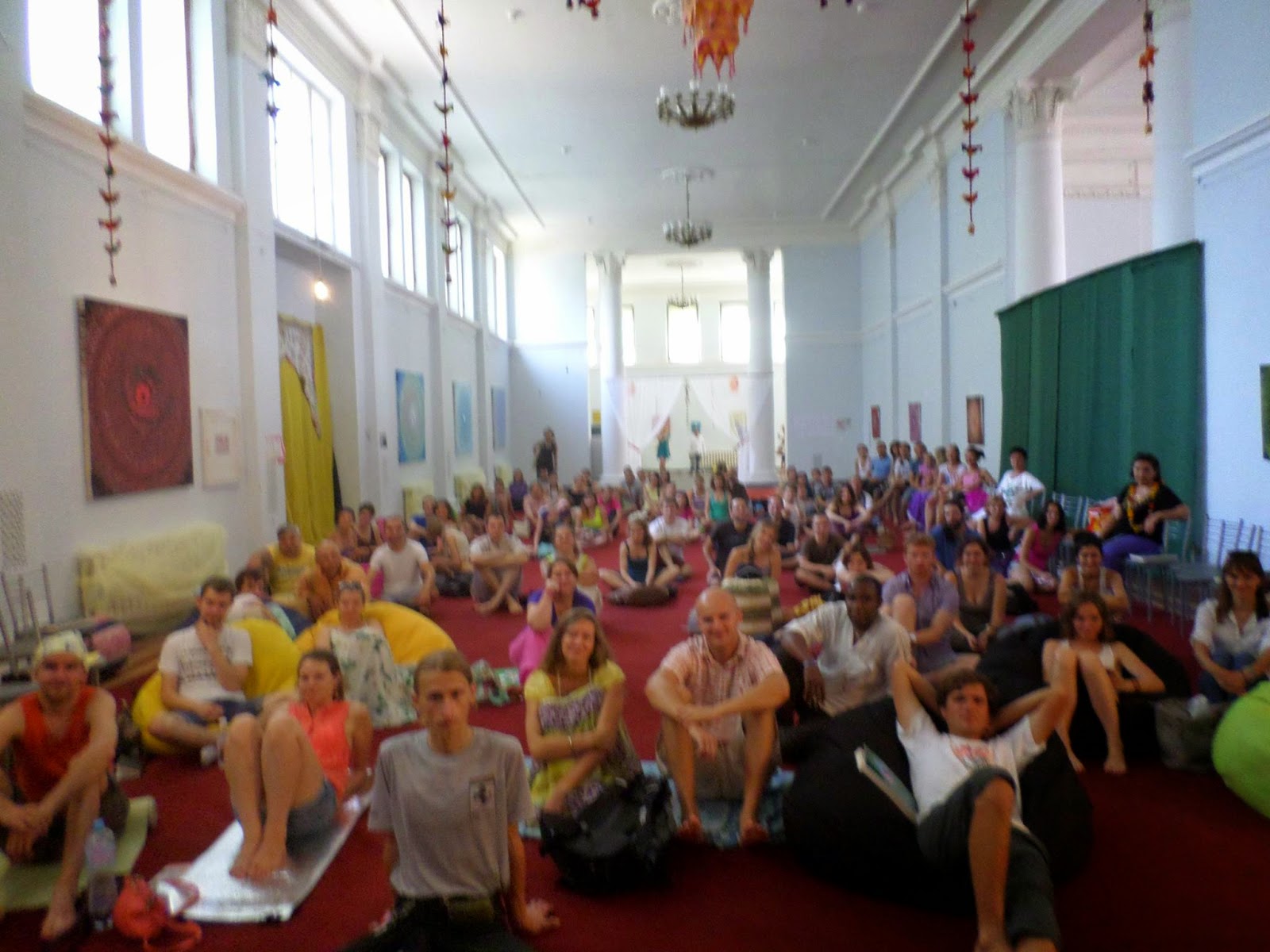I've been trying to write this blog without any polemics, while it must be clear that I have a point of view. But by simply showing where I've been and where I'm going, something is revealed. No one likes being preached to.
 |
| Setting up a shot at Angkor Thom |
| Bhakti Rakshaka Shridhar dev Goswami |
In a book that we produced at Guardian of Devotion Press, called Sri Guru and his Grace, my spiritual mentor and guide, B.R. Shridhar once commented on argument. He said as follows:
"to reach that region is by revealed truth and not by reason (tarkabe pratisthanat). If we apply reason, we shall be nowhere. Among expert arguers, there may always be one more expert--in this way, on and on, no end. Thus, tarka, reason and argument, is inconclusive (apratistha).
Intellectualism has no standing here, because super-consciousness is beyond our jurisdiction. It cannot be an object of our intellect. By serving, by honoring, by self-giving, by heart-giving, and never otherwise, can we invite that high guest. It is not possible to capture and encage Him by intrigue and conspiracy. Such an attempt will betray Satan in another color."
So I've tried to avoid arguing and debate, which seem to me to be non-productive in real inner truth-seeking.
| Tarka: Argument |
I've known a lot of people, however, who seem to take this line exclusively, as if by pushing and arguing we will win something. I know what that is, because I still do it all the time, but I'm trying to purge this from my character.
Argument and preaching tend to involve us in a kind of "holier than thou," attitude. Self-righteous superiority. Here's an interesting article on self-righteousness and ego: http://www.doyouyoga.com/are-you-yogier-than-thou/
For visual learners, here's a funny video:.How to be Ultra Spiritual
I mention this because, when recently I was asked to speak in St. Petersburg, Moscow, Russia and in Kiev, Ukraine, my first instinct was to preach about Krishna Consciousness. An older wiser teacher took me aside and said,
"Wow. That was brilliant. I feel like I'm back in the 1970s.
He didn't argue to us on the meaning of treasure: he would take a jewel from his collection and show it to us. He would tell us how to find the treasure within ourselves, but it was up to us to look.
| Sharing treasure |
 |
| Vedallife Kiev |
 |
| Temple of Sofia, Kiev |
 |
| Nautical Museum in Lahta |
 |
| Cezanne Still Life, Hermitage Museum Collection |
Exploring the Hermitage Museum and looking at art masterpieces....
 |
| Moscow Street Kirtan |
 |
| Walking in downtown Moscow with Chintamani, Madhusudana, and friend |
 |
| Anukrishna at Vedalife |
 |
| Are we museum pieces? |


























